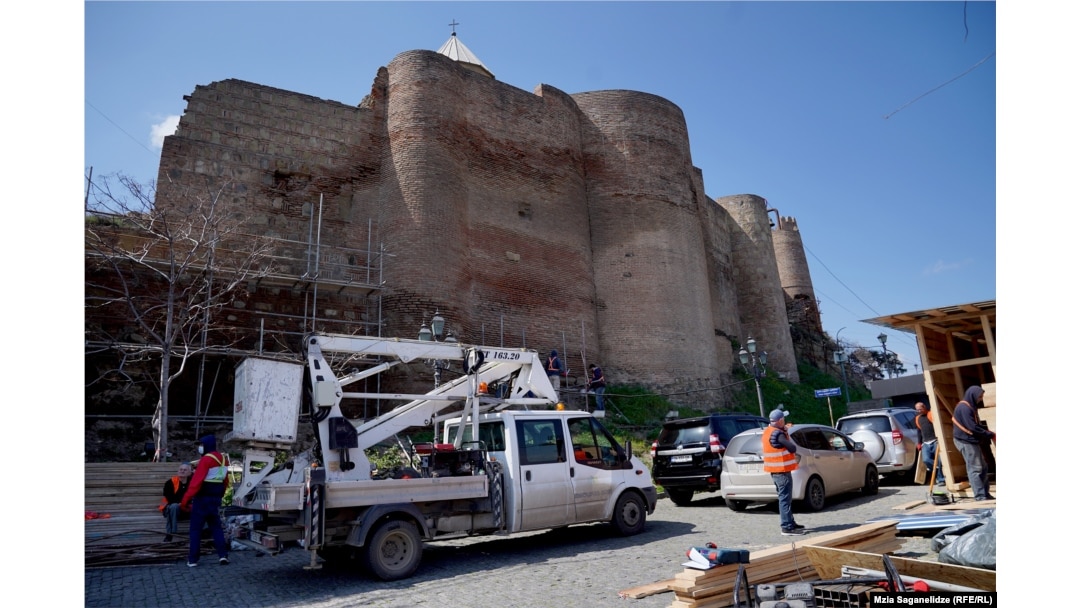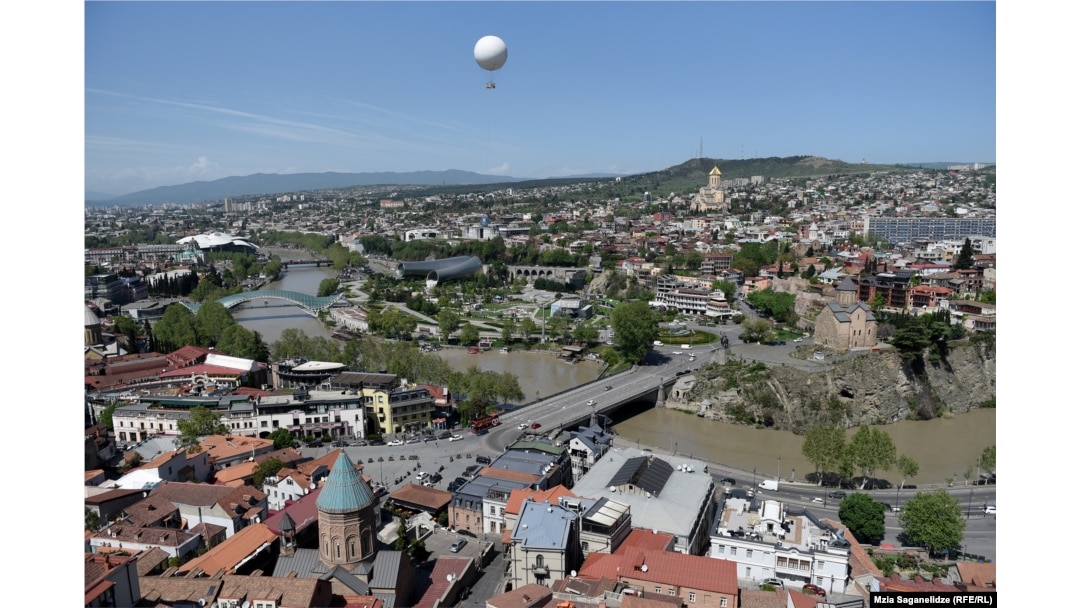TBILISI -- There's an unexpected barrier for visitors driving up from Tbilisi's historic Meidan Bazaar toward the ancient Narikala fortress: a substantial wooden gate blocking the road. While pedestrian access to the fortress remains unaffected, this roadway will be closed for an anticipated 18-month restoration of the city's oldest and most popular tourist attraction.
For those who do make the trek to the top, the views from the fortress overlooking Tbilisi's ancient quarter, with its quaint streets, colorful architecture, and expansive landscapes, are stunning.

Construction crews at the foot of the fortress have started to build scaffolding to repair the walls.
From atop its ramparts, visitors can admire the meandering and lush Mtkvari Valley, the iconic Holy Trinity Cathedral, the towering Mtatsminda Mountain, and the verdant botanical gardens.
A formidable defensive structure, the fortress once boasted sturdy walls, towers, and bastions dating back to the fourth century. Over time, its significance waned, and archaeological findings suggest that structures within its walls were gradually buried beneath layers of earth.

A picturesque view of Tbilisi from the Narikala fortress with the meandering Kura River.
The primary fortifications of the Narikala fortress date back to the 16th and 17th centuries. However, both its inner and exterior walls sustained significant damage as a result of a devastating earthquake in 1827.
Another view overlooking Tbilisi's historic quarter
In 2020, the Eurupa Nostra nongovernmental organization and the European Investment Bank Institute announced that the fortress was one of Europe's most endangered cultural-heritage sites.
The organization noted: "Today, the Narikala fortress is at risk of collapse, mainly due to lack of maintenance, hydrogeological issues in the area and general decay. In addition, a high-capacity cable car, built in 2012, which operates between the center of Tbilisi and the Narikala fortress, has increased visitor access twofold, which in turn has increased the pressure of tourism on the site."
To enter the complex, people must walk through the crumbling quadrangular tower.
Tariel Kiparoidze
Tariel Kiparoidze, who is leading the restoration project, sees the site as a living tapestry of history, where each layer of destruction and reconstruction tells a unique story.
Kiparoidze plans to use authentic materials such as Georgian bricks and limestone to ensure the integrity of the restoration process.
"We will not use secondhand bricks, but new ones. Imagine that a building made of Georgian bricks collapsed somewhere and I took those bricks and used them on Narikala. For what? To make it look like the old one? This would be fake," he said.
The rehabilitation project involves strengthening displaced stones with lime mortar, replacing worn-out stones, and demolishing and reconstructing deteriorated walls.
Another view shows the decrepit state that the fortress walls are in.
Archaeological assessments play a crucial role in the process, as specialized teams study and reinforce damaged structures. Narikala's medieval water reservoir is also slated for restoration.
Kiparoidze emphasizes the dual objectives of preserving Narikala's historical and architectural heritage while preventing further deterioration.
"On the walls of Narikala, we see history from ancient times to the beginning of the 20th century," says Tariel Kiparoidze, who is in charge of the restoration project.
Archaeologists started the first thorough study of the castle complex in 1966.
Kiparoidze, who was a student at the time, participated in the archaeological excavations. During this work, the ruins of the Rustaveli-era temple, dating back to the 13th century, were discovered on the grounds of the fortress, which was later restored.
The facade of one of the fortress's inner walls, with its impressive steps
Unlike previous restorations, the current project focuses solely on renovating and strengthening the monument without embellishment. The country's cultural heritage agency will also supervise the rehabilitation.
Stones collected by tourists sit atop its broken walls.
The last restoration in 2017 addressed structural concerns, including the removal of a precarious addition to the fence wall and the restoration of the access road to St. Nicholas Cathedral's courtyard.
Nearly $5 million has been budgeted for the latest work, which is expected to be finished in August 2025.
Kiparoidze has spent over 50 years studying and working on the site.
"On the walls of Narikala, we see history from ancient times to the beginning of the 20th century. If you look at the castle, it is a colorful picture. There are many layers of destruction and reconstruction. Each of these layers is a monument in itself and should be protected, like the whole of Narikala."
A photo from the 1960s shows the decrepit state of the fortress in the last century.

